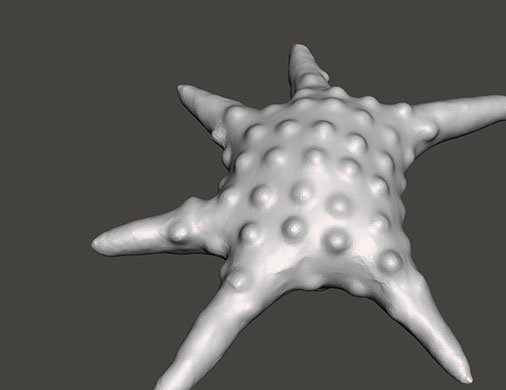Species: Foramifera/ “Foram”
Student: Megan Janda
Information:
Zooplankton and Phytoplankton are at the bottom of the food chain, meaning that these organisms are arguably the most important lifeforms on the planet. With millions of species populating every body of water, there are endless variations of these creatures.
A type of zooplankton, known as Foramifera, or Foram for short, is a single-celled organism with a shell protecting its body (Berkley.edu). Foramifera has been dated to be at least 500 million years old, and their shells have been found as fossils (Berkley.edu). Because of the long-standing life this species has endured, scientists are able to use the different variations of the species to determine past environments (Berkley.edu). This organism has been seen in various sizes, from approximately 100 micrometers to nearly 20 centimeters, and these animals grow their shells as they grow themselves (Berkley.edu). Foram eat a variety of substances, such as “organic molecules, bacteria, diatoms, and other single-celled algae, [and] small animals such as copepods (Berkley.edu). This species can be found in a wide range of areas, reaching from the tropics to the poles, tidal pools to deep ocean trenches, however certain species of foram are very particular in where they live (Berkley.edu). Information can be drawn from the shells, informing scientists what the chemistry of the water was at its creation (Berkley.edu). An interesting fact about the Foramifera is that their shells contribute to the pink hue that can be seen on beaches in Bermuda (Berkley.edu).
References
Wetmore, Karen. “FORAM FACTS: AN INTRODUCTION TO FORAMINIFERA.” FORAM FACTS - OR AN INTRODUCTION TO FORAMINIFERA, UC Berkley, www.ucmp.berkeley.edu/fosrec/Wetmore.html.
